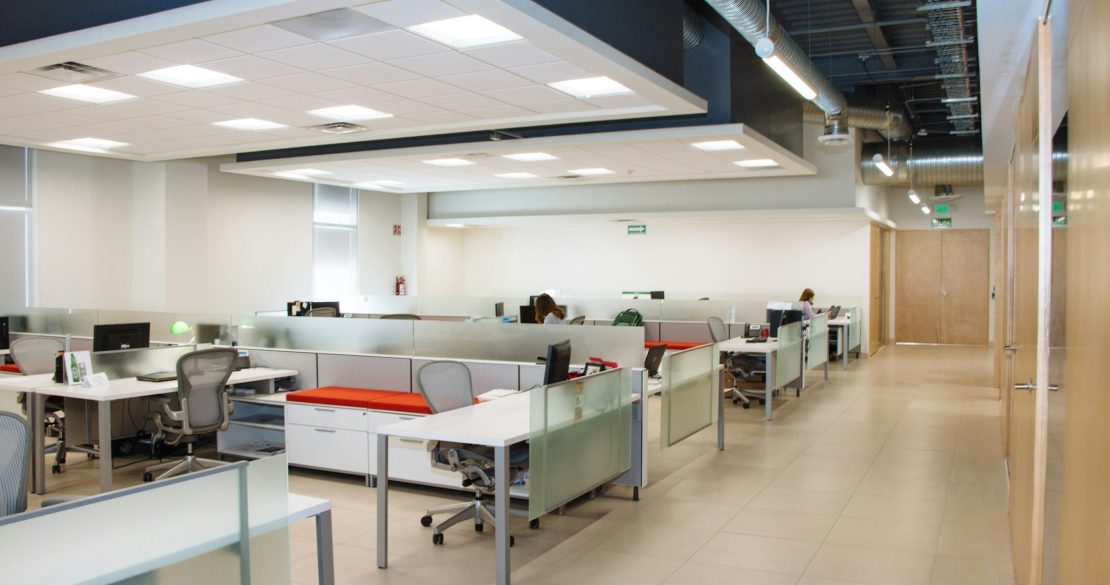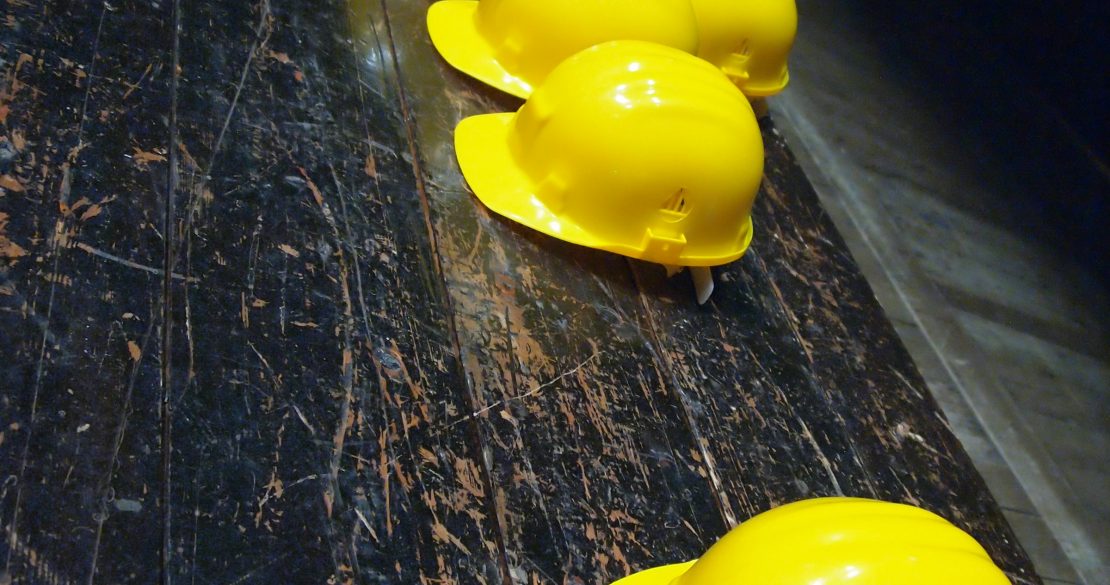It’s a psychological fact that your attitude toward work is directly linked to the design of the office workspace. Planning the perfect office for every employee is impossible, but considering the pros and cons of open office and closed office layouts can help you choose which is right for you.
Table of Contents
What is an Open Office Layout?
What is a Closed Office Layout?
Advantages to a Closed Office Layout
Storage
Personalization
Focus
Privacy
Disadvantages to Closed Office Layouts
Cost
Limited Collaboration Opportunities
Limited Socialization
Less Natural Light
Uninviting
Advantages to Open Office Layouts
Employee Happiness & Morale
Flexibility & Customization
Cost
Better Communication & Collaboration
Access to Natural Light
More Inviting
Attract Employees
Employee Retention
Disadvantages of Open Office Layouts
Distractions
Lack of Privacy
Health Concerns
Final Thoughts
What is an Open Office Layout?
An open office layout is just that: open. It does away with cubicles, walls, doors, and any other barriers that keep colleagues from easily working or mixing together. Open offices still include workstations, desks, and everything else required to carry out the tasks of the business, but do so in a way that encourages comfort, collaboration, and creativity that doesn’t come when employees feel ‘chained to a desk’ for the workday.
What is a Closed Office Layout?
A closed office layout includes all the things an open layout does not. A closed office includes separate cubicles for each employee and walls and door that cut colleagues off from one another or from interacting in the rest of the office space. Closed office layouts can also include separate offices for each employee – or for C suite staff only – which further distance employees from one another or reinforce the employee-boss relationship rather than collaboration between colleagues.
Advantages to a Closed Office Layout
While many businesses look to open office layouts to increase productivity, employee morale, collaboration, creativity, and more, the closed office layout has advantages an open office lacks. By creating a closed office space, you gain attributes like:
Storage
Closed work areas offer more opportunities for overhead shelves, desks with drawers, cabinets, and other storage solutions for the items an employee needs to do their job effectively.
Personalization
When an employee is allowed to personalize their space with photos and other personal items, they often feel more comfortable and ‘at home’ in the workplace. Encourage employees to set out a potted plant or flowers for a touch of green or color and a hint of biophilic design that helps in a myriad of ways.
Focus
Different people work in different ways. Some, like me, require quiet and a somewhat blank space. I’d be content with a workspace just for me that included no adornments – just me, my computer, monitor, and the program I use to write this article.

In a closed office environment, walls, doors, and other barriers prevent colleagues from ‘dropping by’ your desk to chat or ask questions when you’re busy trying to meet a deadline.
Privacy
You may be working on a project for a client that requires an NDA. The sensitive, secure information or access to private servers or other tools require privacy that an open office can’t give. The coworker who likes to stop and chat with everyone will be deterred by the closed design so you can guard your, and your client’s privacy.
Additionally, when it’s time for private meetings or even employee performance reviews, these meetings should be held in a quiet, private place away from the eyes and ears of those who should not be privy to such conversations.
Disadvantages to Closed Office Layouts
Rarely does anything come without a some sort of down side. Disadvantages of closed office layouts include:
Cost
Walls, doors, cubicles, and other dividers all take up space in the office. Closed office spaces require more per-employee space, and in turn a bigger office. Bigger offices typically demand higher rents and take more electricity to power the basic needs of the company.

Limited Collaboration Opportunities
While one advantage to a closed office layout is the privacy it offers, this can also be a disadvantage. When colleagues need to collaborate on a project, the work for that project needs to be moved to a space where everyone can meet.
Employees find themselves leaving their desks often to go check in with colleagues, leading to a loss in productivity. When colleagues aren’t limited by barriers, collaboration and productivity increase.
Limited Socialization
If you work in a closed office environment, how well do you know your colleagues? Can you hold a conversation beyond the weather and the status of a project? The closed office environment doesn’t allow for much interaction between colleagues outside of working on a project.
There’s limited chances to get to know one another better to build a functional team when everyone arrives and goes straight to a cubicle or office to be on their own. Employees in a closed office environment may find themselves feeling alone and cut off from everyone else.
Less Natural Light
Access to natural light has been shown to boost happiness, productivity, creativity, and more – all attributes you hope to see in your employees. When employees are cut off from natural light sources, these positive outcomes decrease.

In a closed office environment, you can’t set everything up close to windows or under skylights or sun tunnels for maximum natural light exposure.
Uninviting
The walls, doors, and cubicles needed to create a closed office environment cut off various parts of the office. Natural light is important for employee happiness – and in turn morale.
Additionally, closed offices which don’t invite much sunlight can seem cold, dim, and uninviting. Employees in closed office environments are more likely to be counting the minutes to 5:00 p.m. when they won’t have to feel so closed off.
Advantages to Open Office Layouts
A closed office layout may be just what your business needs, but many businesses have turned to open office layouts. Some of the advantages of open office layouts that may sway your opinion include:
Employee Happiness & Morale
An open office layout encourages positivity and happiness in employees. When employees are happy, other positive attributes like creativity and productivity flow better.

Eliminating confining spaces like cubicles or closed offices connects colleagues to one another. When colleagues can connect easier, team productivity goes up, and morale and job satisfaction improve. Additionally, employees aren’t confined to small, dim offices where they may work alone.
Flexibility & Customization
When you want to make changes that include shuffling things (like workspaces) around, an open office layout is easier to work with. Open office layouts are more easily rearranged as needs changes, teams form and reform, or the company grows or makes other business structure changes.
Additionally, open offices allow you to use the space as you see fit. Adding things like break rooms, quiet areas, and more are easier when you don’t have to knock down walls. Check out our article on Creating a Relaxing Break Room Design for tips on deciding what to include.
Cost
If you’re looking at your bottom line, choosing an office space with a more open plan layout may be just what you’re looking for. Providing workable spaces for everyone is much less expensive than furnishing individual offices or cubicles.
Better Communication & Collaboration
Removing walls removes the barrier and distance between colleagues those walls cause. Open office layouts with grouped workstations bring team members together. Better access to the people you work with means better communication, as well as easier and more opportunities to collaborate.

Rather than having to get up and walk across the room or knock on a team member’s door, open office plans allow colleagues to collaborate right at the workstation and have spur-of-the-moment discussions and problem-solving sessions, allowing work to continue. Read our article on How to Design an Office That Promotes Collaboration for more information on creating an office space to enhance communication and collaboration.
Access to Natural Light
Walls do more than cut off colleagues from one another; they cut off people from beneficial things like natural light. The sun’s rays provide Vitamin D and other health benefits, and open offices allow for more access to that light.
When you work with the staff at Realty Asset Advisors, we can help you design a layout that takes advantage of natural light and give you ideas on how to set up workspaces and break areas for maximum exposure. We’ll make sure you don’t accidentally face desks in a way that computer monitors capture the sun’s glare and prevent employees from being productive.
More Inviting
When you walk into an open office environment, you’ll see colleagues working together as well as socializing. The natural light pouring in makes the area brighter and more inviting than walled off offices and cubicles lit by artificial lighting that may be dim and unfocused.
Attract Employees
Open office layouts are more modern designs that can take advantage of their space to offer employees the things they want most in a workplace. An open office gives potential employees the chance to see how people work together in the space, the work flow and traffic flow of the office, and other things they look for in a workplace during a visit/interview.
Employee Retention
Once you’ve hired top team members, you need to be able to keep them coming back. Creating an open office environment where everyone is comfortable, can collaborate and communicate without barriers, and use workspaces how they see fit are all ways an open office environment can increase employee retention – employees won’t stay somewhere they feel confined or uncomfortable.
Disadvantages of Open Office Layouts
As with closed office layouts, open office layouts have some disadvantages, too. Make sure you consider all angles of both options before choosing which is right for you. Consider some of these to consider before you completely open up the office:
Distractions
Without walls, doors, or cubicles, there are more opportunities for distractions. Imagine having HR or accounting employees next to the buzz of the sales team or energetic discussions of the marketing team discussing the latest campaign.

This open office concept serves the marketing team and in some cases the sales team, but HR and accounting employees who need concentration and quiet may suffer.
Lack of Privacy
Along with distractions, open office environments bring with them a lack of privacy. Certain meetings and tasks require privacy for focus or confidentiality, and open offices don’t offer many private spaces.
Additionally, colleagues don’t necessarily want to be around one another all day, every day. More introverted employees may crave privacy and down time from time to time, and even the most extroverted employee needs time to themselves to relax and recharge. Having nowhere to go cuts off employees from needed down time.
Tip: Consider soundproof panels to wall off a private area for such instances.
Health Concerns
The COVID-19 pandemic drove everyone out of the office and into their home offices to do their work. Teams kept in touch via video call, email, and text. As many companies have called for a return to the office, employee health has been a primary concern.

Open office environments don’t provide the same barriers as closed offices, meaning sick employees (or asymptomatic employees) who choose to come to work rather than stay home have an increased chance of passing the illness around.
Final Thoughts
These are just some of the ways your choice of an open or closed office layout can affect your employees and raise or lower their morale. When you meet with the staff at Realty Asset Advisors, we’ll discuss your vision for your perfect office environment and how your choices can affect your employees and business.
Contact us today!










